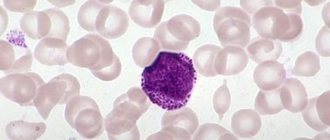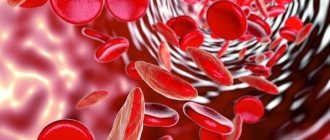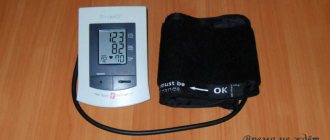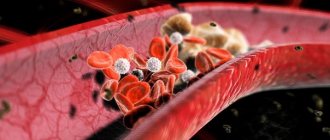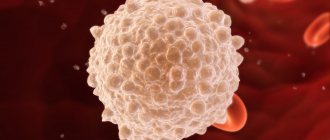They pricked the baby’s finger, took blood, and the next day, after standing in a long line, you took the test. Is it time to take another turn to show the test to the doctor? Let's take a look there ourselves and try to figure out what all these Latin words and mysterious numbers mean.
Whatever happens, doctors prescribe the same thing - a general blood test. Kidneys hurt - a general blood test, chest pain - the same thing, the temperature has risen - again a general blood test, and then we'll see. At least we are adults, but what if a child is sick? Why should he prick his fingers in vain - he’s crying!
In addition, doctors, having looked deeply into this analysis, always prescribe the same thing - antibiotics. Thirty years ago they prescribed oletethrin, ten years ago - smallpox, now augmentin and suprax are in fashion. I’ll tell you a secret: smallpox, suprax and augmentin, although different in chemical composition, work exactly the same, and even against the same bacteria.
Let's decipher the blood test together.
Leukocytes - what are they?
Leukocytes are the body’s protective army. They make up a large group of white blood cells whose purpose is to rid the body of infections. Leukocytes take part in allergic, autoimmune and tumor processes. White cells are divided into types, which are responsible for their specific function.
A complete blood count shows the total number of cells. The leukocyte count is responsible for accurately identifying the cell types that cause an increase (leukocytosis) or decrease (leukopenia) in white cells in the blood. The formula can be found in an expanded form of a blood test. There are five types of cells, their number and relationship to each other.
The blood test is assessed using an automatic analyzer, which calculates the percentage of each type of the total number of cells. The device also calculates the white blood cell count per liter of blood.
Additionally, a visual assessment of the blood smear using a microscope may be required. A “manual” check of analyzes may be necessary in the following cases:
• Changes in the leukocyte formula; • There are altered or immature cells; • Signs of anemia are visible; • Reduced platelet count.
If the analysis is processed manually, only the percentage will be visible. Each type of assessment allows you to correctly diagnose diseases, understand their causes and prescribe the correct treatment.
Why might neutrophils be low?
Low blood levels are characteristic of some diseases and conditions:
- infections of viral origin (chickenpox, hepatitis, influenza);
- inflammatory processes;
- radiation sickness;
- taking certain medications (usually cytostatics or immunosuppressants in the treatment of autoimmune diseases or malignant tumors, as well as antimicrobials - penicillin, cephalosporin, sulfonamide);
- chemotherapy for cancer;
- agranulocytosis;
- anemia (aplastic and hypoplastic);
- exposure to radiation.
What do granulocytes say?
Part of the leukocytes are granulocytes, which get their name due to the presence of granules. There are three types of cells: neutrophils, eosinophils and basophils. The types of granulocytes differ from each other due to the color of the granules and the structure of the nucleus.
The granules store immune substances that are important for protecting the body. Thanks to them, cells participate in inflammatory processes. The job of granulocytes is to absorb proteins and chemicals. Granulocytes also digest them.
The cells mature in the bone marrow, where the resulting quantity is stored for another 3-4 days. Mature cells enter the blood, where they circulate for 6 hours. After the end of the cycle, granulocytes enter the tissues, where they perform their functions.
The largest number of leukocytes are neutrophils, of which there are always about 1010 in the blood. If a bacterial infection enters the body, neutrophilia begins - an increased amount of neutrophils in the blood. The number of cells that appear depends on the number of harmful bacteria.
The duration of stay of neutrophils in the body is only 4 days, which is why still immature cells (band cells, metamyelocytes, and others) enter the body. This phenomenon is called a “shift of the leukocyte formula to the left.” With neutropenia (reduced number of neutrocytes), the body is less protected from infections.
About 5% of leukocytes are eosinophils, the number of which depends on adrenal hormones. In the morning there are the largest number of them. They are stored in the layer under the mucous membrane of the gastrointestinal tract. A quantity above the norm indicates that the following processes are occurring in the body:
- Infestation with parasites;
- Allergy;
- Autoimmune processes.
Medical offers to sign up for diagnostics and tests. In our laboratory it is possible to take all types of tests in Tula. Tel. for recording.
The smallest number (less than 1%) are basophils. They play a role in the release of histamine during allergic reactions. It is these cells that are responsible for itching, redness, irritation and bronchial spasms.
Depending on the location of basophils in the body, the following reactions differ:
- Bronchial asthma;
- Rashes
- Hives;
- Quincke's edema (swelling of the larynx).
Leukocytes or white blood: evolution of the immune system
Leukocytes are different. Some are responsible for fighting bacteria, others deal with viruses, others “specialize” in very large adversaries - for example, in plant cells (this happens more often than you think - I mean an allergy to pollen) or even in multicellular scoundrels - worms.
So looking at the total white blood cell count during an acute infection is good, but damn low. At best, the doctor will determine that there is an infection. But to understand what exactly caused this infection, you need to look at which leukocytes are elevated. This study is called the leukocyte formula.
That's what we'll talk about.
Norms
The main changes in the red blood of children occur not only up to a year, but up to a month, and this is due to the fact that during the first month of life, traces of the transition to lung breathing still remain in the child’s blood. With the immune system, everything is much more complicated - it changes continuously during the first six years of life, and extremely unevenly. So, get ready: there will be more numbers.
Leukocytes . They are WBC. Their number is measured in billions per liter of blood (which, compared to red blood cells, seems somehow frivolous). And since at birth a child moves from a sterile environment (the mother’s womb) to an extremely unsterile environment, the number of leukocytes, even normally, in children is much higher than in adults. True, it decreases with age. In a one-month-old child, the normal rate of leukocytes in the blood is from 6.5 to 13.8, at six months from 5.5 to 12.5, from one year to six years (yes, at the very time when the child most often gets sick) from 6 to 12. And only when the child’s immunity becomes strong enough to withstand numerous infections, the number of leukocytes approaches the number in adults - from 4.5 to 9 (some for some reason consider 12 to be the norm, but this is not entirely true).
Neutrophils , also known as NEU. Their number is counted not in absolute units (how many per liter of blood) but as a percentage of the total number of leukocytes. The task of these cells is to fight bacteria. It's a pretty fair fight: neutrophils simply eat the unwary bacterial cells and digest them. True, in addition to bacterial cells, neutrophils also act as a kind of cleaners - in exactly the same way they remove any cellular debris from the body, not just microbes.
There are different neutrophils: there are band neutrophils (these are a kind of juniors among the eater cells), but there are not very many of them in the blood - things like destroying infections are not a child’s task. Their number almost does not change with age: in a one-month-old, one-year-old, and even a six-year-old child, it is from 0.5 to 4.5%. Only in children over seven years of age (as, indeed, in adults) the upper limit of the norm for band neutrophils rises to 6%. The child has grown, the body has become stronger - the immune system is ready for invasion.
But the real “workhorses” of the immune system are segmented neutrophils - by the way, they are the main and almost the only protection for children under 2 years of age. In children under one year of age, the normal number is from 15 to 45%, and from one to six years of age (when work increases significantly), the number of neutrophils increases significantly - from 25 to 60%. Finally, by the age of seven, the number of segmented neutrophils reaches the adult norm. True, this norm is very vague - from 30 to 60%. That is, thirty percent is the norm, and sixty is the norm too.
Monocytes , also known as MON. These are the “younger brothers” of neutrophils . For the time being, they sit in the tissues, and only rarely emerge into the blood. Normally, their number does not exceed 2 to 12% in children under one year old or from 2 to 10% in children over one year old. Adults and children are no different in this indicator - still the same 2-10%. True, when there is a catastrophic shortage of neutrophils monocytes and the number of monocytes in the blood, although not greatly, increases.
Eosinophils , also known as EOS. It is rumored that eosinophils are responsible for allergic reactions. To put it mildly, this is not entirely true. Eosinophils do not produce class E immunoglobulins, the level of which is increased in allergy sufferers. Eosinophils , if you like, are the “highest caste” of eater cells (before this, we talked about neutrophils and monocytes as eater cells). They are able to devour everything that is not capable of consuming themselves. Even multicellular aggressors (worms) and very large foreign cells (for example, intestinal amoebas) are desperately afraid of eosinophils . The fact is that eosinophils do not swallow cells - they stick to them, inject their digestive enzymes into the cells and then suck out the contents of these cells, like a child sucking out a liter carton of juice. Just turn away - and all that remains from the package (in our case, from a small worm, for example) is an empty shell. Normally, eosinophils in the blood - from 0.5 to 6%
Lymphocytes , also known as LYM. These are the main cells of the mature immune system. Their specialization is the fight against both viruses and bacteria. But especially recklessly, lymphocytes deal either with viruses or with their own cells, which, due to the naivety of these viruses, have sheltered. Normally, the blood of a child under one year of age lymphocytes , although they work, to be honest, at half capacity. But when the baby’s immune system begins to develop (I remind you, the development of the immune system after a year and ends mainly by 6-7 years), the number of lymphocytes in the blood drops quite sharply - to 26-60%. Finally, after 7 years, lymphocytes “stop” at around 22-50%.
Basophils, BAS. Just young lymphocytes. Their number never exceeds 1%.
All. Uf-f-f-f...
Advertising
Monocytes are killers in the body
Monocytes make up 10% of white blood cells and perform the main “destructive” function of the immune system. Also called tissue macrophages. They are formed in the bone marrow within 5 days and immediately go out to “hunt” without leaving a reserve. They quickly penetrate tissues and destroy foreign proteins. A large number of monocytes are found in the liver, spleen and lungs. They exist for about 60 days and process foreign proteins into antigens, which are subsequently dealt with by immune cells.
An increase in monocytes in the blood, or monocytosis, indicates that there are chronic infections in the body. They can also talk about infections that are located in the cells themselves: viruses, chlamydia and mycoplasma.
Why do lymphocytes increase?
Lymphocytes are considered the main immune cells. They produce antibodies against foreign microorganisms and form humoral immunity. They make up about 25-40% of all leukocytes. Their increase in the blood occurs in the following cases:
- for viral diseases;
- for tuberculosis;
- for acute and chronic lymphocytic leukemia;
- with lymphosarcoma;
- with hyperthyroidism.
An increased level of these cells is said if their absolute number exceeds 3.6x109 per liter. Neutrophils in the blood in such pathologies may be reduced.
Lymphocytes are the final link
Lymphocytes are responsible for the final action of the immune system, processing antigens already prepared by monocytes and other cells. They are responsible for acquired immunity, which will prevent the infection from acting again. Lymphocytes produce antibodies and memory cells. Like other cells, lymphocytes are produced in the bone marrow but circulate in both the blood and the lymphatic system. Cell maturation is influenced by the thymus and lymph nodes. The group of lymphocytes is the second most numerous in the blood.
To identify cells in the blood, a special test called immunophenotyping is used. Thanks to this study, it is possible to determine the specific number of this type of cell. Determining specific types of lymphocytes makes it possible to diagnose and treat diseases of the immune system, HIV infections and others.
The leukocyte formula indicates the increase and decrease in the number of lymphocytes. Both indicators are very important. Lymphocytosis, or an increase in the number of cells, indicates viral infections, as does a decrease (lymphopenia). A decrease in the number of lymphocytes significantly reduces the protective function of the body, which is typical for people with immunodeficiency.
